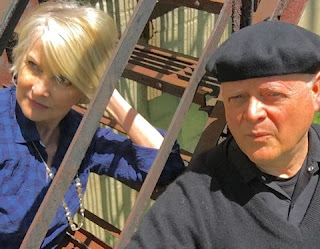by
Judith Lachance-Whitcomb
Every time I get the email reminding me that I signed up to
do this week’s blog, I ask the same question, “Why did I sign up for
this?” Contributors to the Indiana Writers’ Consortium blog always
have such excellent writing expertise and they are willing to share it with us. I often think that someone wanting to get
into writing would just have to go through our blogs and they will find a great
writing course. A person can find everything
from legal advice to ideas for writing to words from experts, great resources,
and even what to do with writing blocks.
Hmmm, wait, I do have an expertise – writing blocks! Surely, I have had more than anyone else
around.
Does that make me an expert?
I don’t know. Some may believe I
live in a writer’s block. Some may even wonder how I can consider myself a
writer when I spend more time blocking than writing. However, I am a writer
with expertise in blocking. So, let me share some things I’ve tried to overcome
this writer’s malady.
Research – All
writers know the importance of research so I began to research whatever I could
about writer’s blocks. First, I found
out that many well-known authors went/go through writers’ blocks, so there’s
good company for those of us who block.
Then I found numerous suggestions for overcoming the blocks. In a previous IWC blog, I reported some of
the techniques and their impact on my blocks.
(December 18, 2013, "All I want for Christmas").
Therapy – One time, when the Evil Block arose
again, I resorted to my knitting hobby and created two polyfill pencils. The
larger one was used to hit my head while blocking, the smaller functioned as a
worry stone. Did that help? Not much, but I do have to say there is
something therapeutic about hitting my head without danger of major harm. Also, knitting was a good excuse to avoid the
writing block – I just didn’t write.
The Real Deal – If I am a writing block expert, I should
be able to suggest something really beneficial in the Block Battle. Here it is:
NETWORK. That’s it. I’ve found that the best way for me to work
through a block is to immerse myself into the writing community. The support, advice, and encouragement from
fellow writers ignite the writer-me.
Where do you find that?
There are
excellent writing critique/support groups in Northwest Indiana. A number of
them are listed on the Indiana Writers’
Consortium webpage (http://www.inwriters.org/resources-and-blog/). Often when I was in a block, I would miss my
groups’ meetings. When I returned, my
block dissipated. If you don’t have a
critique group, find one.
Other
opportunities for networking are writers’ conferences. For me, the conference that is in my own
backyard, so to speak, is the annual IWC Steel Pen Creative Writers
Conference. I’ll share an
experience that I had at last year’s conference.
I hadn’t been
writing. The block was winning. I went to the conference hoping for a push to
work through my block. The first session
was good, explaining how this author developed her characters by giving them
depth through detailed character sketches/files. Mulling over the next set of sessions, I
couldn’t make up my mind. I just
wandered into the nearest room.
Realizing it was a session on writing memoirs, my heart sank. Memoirs are not a genre that I read and
definitely not one that I am interested in developing. As I turned to leave, the presenter smiled
and invited me to join the group already in a circle. Not wanting to insult him, I sat.
The presenter,
Marc Nieson, began by having us visualize. His calm, inviting voice allowed
each of us to go into ourselves. The
session progressed and I was totally engaged.
After the session, I headed directly for the IWC bookstore tables and
purchased Marc’s book, School House,
lessons on love and landscape. Can you believe it? I actually bought a memoir.
As the
conference was winding down with hors d'oeuvres and mingling, I spotted
Marc. I had already taken my books to
the car. I said, “Marc, I wanted you to
sign my book but I don’t have it with me now.”
He grabbed a piece of paper and wrote the following:
To Judy,
With great thanks and
affection, looking forward to your
words in whatever bloody “form” they take.
In ink and arms,
Marc
Memoirs are still not my favorite reading feast but Marc’s book
is. Like his session it bore a huge hole
through my block. Sharing his journey with me via his book, he created a
collage of memories, people, nature, and writing that made me eager to pick up
my pen (I should say mouse) again.
During the next session of one of my writing groups, Magic Hour Writers, I was extolling
Marc, his book, and the effect it had on my writing energy. They suggested that I put Marc’s note up near
my computer. I have done that, and
Marc’s words help me fight my blocks. I have written more this past year than I
had in the previous two.
My best advice for conquering blocks is to network. Actually, my advice for writing is
networking. The support of people who
understand the unique writer persons we are is crucial not only for helping us
to work through blocks but aiding us in developing our craft.
If you haven’t done so already, be sure to take advantage of a prime
network connection by signing up for the 2017
Steel Pen Creative Writers Conference. Go to the IWC webpage for details.
Until then, wishing you block free days and happy writing, I’ll see
you at the Conference.







